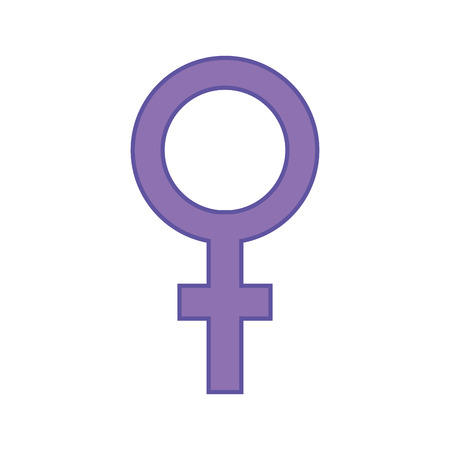Introduction to Kundali Milan and Its Importance in Indian Marriages
Kundali Milan, also known as horoscope matching, holds a place of immense importance in the Indian matrimonial tradition. In India, marriage is not just seen as a union of two individuals but as the coming together of two families, cultures, and destinies. Kundali Milan is an ancient practice rooted in Vedic astrology, where the birth charts (kundalis) of the prospective bride and groom are matched to assess their compatibility. This process involves analyzing several astrological factors such as Guna Milan, Mangal Dosha, and planetary positions to determine whether the alliance will bring harmony, prosperity, and happiness. For many Indian families, Kundali Milan is often considered a mandatory step before proceeding with marriage discussions, reflecting deep-rooted beliefs in destiny and cosmic influence. Whether one belongs to a traditional or modern family setup, the ritual of horoscope matching continues to be a crucial aspect of arranged marriages across regions and communities in India.
2. Understanding the Basics: Birth Chart and Marriage Yogas
In Indian astrology, also known as Jyotish Shastra, the prediction of marriage age is deeply rooted in the analysis of an individual’s birth chart, commonly referred to as the Kundali. The Kundali is a graphical representation of planetary positions at the exact time and place of one’s birth. This ancient system considers several essential elements, especially Yogas (planetary combinations) and specific planetary placements, which are believed to influence the timing and success of marriage.
Kundali Elements Affecting Marriage Age
The following components are crucial when predicting marriage age through Kundali Milan:
| Kundali Element | Description | Relevance to Marriage Age |
|---|---|---|
| Seventh House (Bhava) | House representing partnerships and marriage | Main indicator for timing and quality of marriage |
| Venus (Shukra) | Planet governing love, relationships, and marital harmony | Strong Venus indicates early and harmonious marriage |
| Jupiter (Guru) for Females, Mars (Mangal) for Males | Key planets for female and male horoscopes respectively | Placement impacts timing and stability of marriage |
| Dasha System (Planetary Periods) | Time periods ruled by different planets in life | Certain Dashas can trigger marriage events |
| Yogas Related to Marriage | Specific combinations like Vivah Yoga, Manglik Dosh, etc. | Affect prospects and timing of marriage significantly |
Understanding Marriage Yogas and Planetary Positions
Marriage Yogas: In Vedic astrology, Yogas are unique planetary combinations that create particular outcomes in life. For marriage prediction, astrologers look for auspicious Yogas such as Vivah Yoga, which indicate favourable timings, or check for Doshas like Manglik Dosh, which may delay or complicate marital prospects.
Planetary Positions: The strength and placement of Venus (for both genders), Jupiter (for women), and Mars (for men) play pivotal roles. For example, if Venus is well-placed in the 7th house or aspects it positively, early marriage is likely. Malefic influences on these houses or planets can signify delays.
Cultural Significance in Indian Context
Kundali Milan is not just a ritual but a guiding framework that many Indian families rely upon for determining the right age for marriage. The detailed scrutiny of Yogas and planetary periods ensures culturally aligned predictions, respecting local traditions such as matching Gunas through Ashtakoot Milan before finalising alliances.

3. Key Factors Impacting Marriage Age in Indian Astrology
In Indian astrology, predicting the timing of marriage is a nuanced process that revolves around several essential astrological factors. Understanding these key components can help you appreciate how Kundali Milan (horoscope matching) provides insights into marriage age. Let us discuss the most important elements that influence the timing of marriage in an individual’s life.
The Significance of the 7th House
The 7th house, known as the house of marriage and partnerships, holds primary importance when determining marriage prospects. Astrologers closely examine the placement and strength of the 7th house lord, as well as any planets positioned here. If benefic planets like Venus or Jupiter aspect or occupy this house, it often indicates timely and harmonious marriages. Conversely, malefic influences or afflictions in this house can delay marriage or bring challenges in finding a suitable partner.
The Role of Venus and Jupiter
Venus is universally recognized as the planet of love, relationships, and marriage in Vedic astrology. Its placement and dignity in one’s birth chart are vital for marriage predictions. In a male’s horoscope, Venus’s strength can suggest early and happy marital life, whereas Jupiter plays a similar role in a female’s chart. A strong and unafflicted Jupiter often results in auspicious marriage timings for women. The presence of these benefic planets in favourable houses supports not only timely but also successful marriages according to Indian traditions.
Importance of Dasha Periods
Dasha periods, which are planetary time cycles unique to Vedic astrology, significantly impact life events including marriage. The Mahadasha (major period) or Antardasha (sub-period) of planets connected with the 7th house or its lord generally activates opportunities for marriage. For instance, if someone is running the Venus or Jupiter Dasha, especially when these planets are positively placed, astrologers consider it an ideal time for marital alliances. However, if these periods coincide with malefic influences or challenging transits such as Saturn’s Sade Sati or Rahu-Ketu periods, delays or obstacles may arise.
Cultural Nuances in Indian Context
It is important to note that in India, societal expectations and family customs often interact with astrological guidance. Many families consult astrologers for auspicious timings based on Dasha periods before proceeding with matrimonial alliances. Thus, astrology is not just about personal destiny but also about aligning with cultural values and family harmony.
Summary
To sum up, accurate prediction of marriage age through Kundali Milan involves careful analysis of the 7th house, the roles of Venus and Jupiter, and ongoing Dasha periods. These factors work together to provide a holistic picture that guides individuals and families towards auspicious timings for marriage according to deeply rooted Indian traditions.
4. Common Terminology and Cultural References in Indian Horoscope Matching
When discussing marriage age prediction by Kundali Milan in Indian astrology, it is essential to understand some of the most common terms and cultural references that are part of the process. These concepts are frequently discussed in Indian households and communities, particularly when families begin looking for suitable matches for their children. Below, we clarify popular terms such as Mangal Dosha, Gun Milan, and Shubh Muhurat, using real-life examples from diverse Indian settings.
Mangal Dosha: The Mars Effect
Mangal Dosha (also called Manglik Dosha) refers to a condition where Mars (Mangal) is placed in specific houses of an individuals horoscope. In Indian society, if either partner is Manglik, it is believed to cause marital discord unless matched with another Manglik or remedial measures are performed. For example, in many North Indian families, if a girl’s horoscope indicates Mangal Dosha, her parents might look specifically for Manglik boys or consult astrologers for solutions like “Kumbh Vivah” before proceeding with the marriage proposal.
Gun Milan: The Points System
Gun Milan is a systematic points-based method used in Kundali matching where 36 Gunas (characteristics) are matched between the bride and groom. The higher the score, the better the compatibility. Typically, a minimum of 18 points out of 36 is considered acceptable for marriage. Here is a simplified table showing what different scores indicate:
| Guna Score Range | Compatibility Meaning | Common Community Practice |
|---|---|---|
| 0-17 | Poor Compatibility | Avoid match; seek remedies or another match |
| 18-24 | Average Compatibility | Proceed with caution; sometimes additional rituals recommended |
| 25-32 | Good Compatibility | Generally accepted; families happy to proceed |
| 33-36 | Excellent Compatibility | Highly auspicious; considered ideal by most communities |
Shubh Muhurat: Auspicious Timing for Marriage
Shubh Muhurat means choosing the most auspicious date and time for conducting the wedding ceremony. This is an indispensable aspect of Indian weddings across all regions—from Tamil Brahmin marriages in Chennai to Marwari weddings in Rajasthan. Families consult astrologers who check planetary positions and other astrological factors to suggest a Shubh Muhurat. For instance, during the popular marriage season after Diwali, many venues get booked quickly because several auspicious dates fall within this period.
Cultural Context: Everyday Language and Practice
The use of these terms is deeply woven into daily conversations about marriage in India. For example, an aunt might say, “Is ladki ka Mangal bhari hai,” implying concern over Mangal Dosha, or parents may ask, “Gun milan kitna hua?” when they receive horoscope matching results. Choosing a Shubh Muhurat is often discussed well before finalising wedding arrangements, reflecting its importance across castes and regions.
Summary Table: Key Terms in Horoscope Matching
| Term | Description | Cultural Example/Reference |
|---|---|---|
| Mangal Dosha | Mars placement causing potential marital challenges | Kumbh Vivah ritual in North India for remedying Mangal Dosha effects before actual marriage ceremonies. |
| Gun Milan | A system matching 36 Gunas between partners’ horoscopes to assess compatibility. | Elders in Gujarati families discussing “Kitne gun mile?” before proceeding with talks. |
| Shubh Muhurat | Selecting an auspicious date and time for marriage based on astrological calculations. | Bengali weddings typically held during winter months on astrologically preferred dates after consulting family priest. |
Understanding these key terminologies helps not only in interpreting Kundali Milan reports but also in appreciating how cultural beliefs shape decisions around marriage age prediction and match-making processes within Indian communities.
5. Practical Approach: How Astrologers Predict Marriage Age through Kundali Milan
Step 1: Preparation and Collection of Birth Details
The first step in predicting marriage age using Kundali Milan is collecting accurate birth details—date, time, and place of birth. Indian astrologers emphasize the importance of correct data as even a minutes difference can change the planetary positions and impact predictions.
Step 2: Creation of Kundali (Natal Chart)
Using the collected information, the astrologer prepares the Kundali or Janam Patrika. This chart displays the placement of planets (Grahas) across twelve houses (Bhavas) and zodiac signs (Rashis). The Lagna (Ascendant) and Moon sign (Rashi) are particularly important in Indian astrology.
Step 3: Identification of Marriage-Related Houses
The astrologer focuses on specific houses that govern marriage. In Vedic astrology, the 7th house represents marriage and life partner, while the 2nd and 11th houses also play supporting roles. The planets placed in these houses and their lords are carefully examined for clues regarding marriage timing.
Step 4: Analyzing Planetary Influences
Next, the astrologer analyzes planets like Venus (for males), Jupiter (for females), and Rahu-Ketu axis for any doshas like Mangal Dosha or Shani Dosha that may delay marriage. The strength, dignity, aspects, conjunctions, and afflictions to these planets and houses are all considered.
Step 5: Studying Dasha-Bhukti Periods
A unique feature of Indian astrology is the Vimshottari Dasha system—a timeline showing which planet’s influence is active at any given period. Astrologers examine when favorable dashas and antardashas related to marriage occur, as these periods often trigger significant life events including marriage.
Step 6: Matching Guna Milan Scores
If Kundali Milan is performed between two prospective partners, the eight Kootas or Ashtakoota system is used to match horoscopes. While this is mostly for compatibility, certain Guna scores can indicate whether early or delayed marriage is likely based on dosha presence or absence.
Step 7: Synthesizing All Factors for Prediction
The astrologer synthesizes all observations—planetary placements, house significations, dasha periods, yogas for early or late marriage, and Guna Milan results—to make an informed prediction about the probable age range for marriage. Experienced pandits also consider transits (Gochara) for additional confirmation.
This traditional approach combines technical analysis with intuitive judgment shaped by years of practice. In India, families often consult experienced astrologers before making crucial matrimonial decisions to ensure auspicious timing and harmonious matches.
6. Popular Myths and Facts about Marriage Age Prediction in Indian Society
Marriage age prediction through Kundali Milan is deeply ingrained in Indian society. However, over the years, several myths have emerged around this practice, often leading to misconceptions and unrealistic expectations among families and individuals. It is important to distinguish between commonly held beliefs and authentic astrological practices.
Myth 1: Kundali Milan Can Predict Exact Marriage Date
A widespread myth is that astrology can reveal the exact date or time of marriage. In reality, Kundali Milan indicates favourable periods or dasha for marriage based on planetary positions, but it does not guarantee a specific date. Many factors, including personal choices and family circumstances, also play significant roles.
Myth 2: Delay in Marriage Means Strong Doshas
It is commonly believed that any delay in marriage is solely due to doshas such as Mangal Dosha or Shani Dosha. While certain planetary alignments can indicate challenges, delays may also result from practical reasons like education or career focus. Authentic astrology considers the overall chart and life situations rather than blaming only doshas.
Myth 3: Remedies Guarantee Early Marriage
Many people think that performing certain remedies or rituals will immediately lead to marriage. Genuine astrologers clarify that remedies are meant to reduce negative influences and enhance positivity; they do not override destiny or individual free will. Practical efforts must go hand-in-hand with spiritual remedies.
Fact: Kundali Milan Offers Probable Periods, Not Certainty
The truth is, Kundali analysis provides guidance on likely marriage periods by studying the seventh house, its lord, Venus, and related dashas. These insights help individuals prepare for opportunities but should not be seen as absolute predictions.
Fact: Cultural Beliefs Influence Interpretation
Cultural backgrounds and regional traditions often shape the way Kundali results are interpreted in India. For example, North Indian astrologers may use different matching parameters compared to South Indian practitioners. Understanding these nuances helps avoid confusion.
Addressing Misconceptions for Informed Decisions
It is essential for families and individuals to consult knowledgeable astrologers who follow authentic practices and explain both the possibilities and limitations of Kundali-based marriage age prediction. By dispelling myths and focusing on facts, one can make more informed decisions regarding marriage planning in alignment with both tradition and modern realities.
7. Conclusion: Modern Perspectives on Marriage Age and Kundali Matching
In contemporary India, the approach towards marriage age prediction through Kundali Milan is undergoing significant transformation. Urbanisation, higher education, and increased exposure to global cultures have led many young Indians to adopt a more balanced perspective on traditional astrological practices. While Kundali matching—especially for predicting marriage age—remains an important consideration for many families, there is a growing trend to use it as a supportive tool rather than an absolute rule. Couples and families are now more open to considering individual compatibility, mutual respect, and shared values alongside astrological factors. Additionally, evolving attitudes towards personal choice mean that many young people prioritise career goals and personal growth before settling down in matrimony, sometimes marrying later than what traditional Kundali predictions might suggest. This shift does not necessarily diminish the cultural value of Kundali Milan; instead, it highlights the importance of adapting age-old traditions to modern realities. Ultimately, a balanced approach—respecting both astrology and individual aspirations—reflects the dynamic spirit of contemporary Indian society. By blending tradition with progressive thinking, today’s generation honours their roots while forging their own unique paths towards happy and harmonious marriages.


